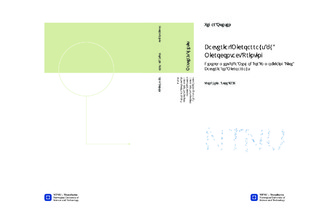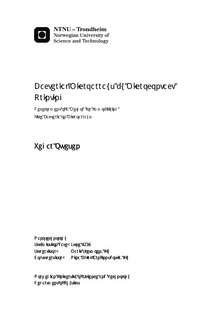| dc.contributor.advisor | Sletmoen, Marit | nb_NO |
| dc.contributor.advisor | Bjørk Arnfinnsdottir, Nina | nb_NO |
| dc.contributor.author | Ottesen, Vegar | nb_NO |
| dc.date.accessioned | 2014-12-19T13:19:45Z | |
| dc.date.available | 2014-12-19T13:19:45Z | |
| dc.date.created | 2014-09-06 | nb_NO |
| dc.date.issued | 2014 | nb_NO |
| dc.identifier | 744154 | nb_NO |
| dc.identifier | ntnudaim:11882 | nb_NO |
| dc.identifier.uri | http://hdl.handle.net/11250/247327 | |
| dc.description.abstract | Traditional microbiological experimental methods generally reveal population-wide statistics and are not capable of revealing variations between individual cells. In an effort to address this, a cheap, quick and easy means of producing micro-arrays with live bacteria immobilized on the array's coordinates has been developed. To achieve this, microcontact printing (µCP) was used to print circular PD ``islands'' onto a surface coated with either PEG or PVA. The bacteria, Pseudomonas putida KT2440 were successfully immobilized on approximately 97% of the printed islands, depending on island diameter. A LIVE/DEAD® BacLight™ assay revealed that over 99% of the immobilized bacteria survive the immobilization on the array. Qualitative analysis suggests the bacteria survive for hours after immobilization, provided nutrients are available. The developed method may, by revising the stamp design and/or choice of elastomer, likely be optimized to immobilize only one bacterium per array coordinate. | nb_NO |
| dc.language | eng | nb_NO |
| dc.publisher | Institutt for fysikk | nb_NO |
| dc.title | Bacterial Microarrays by Microcontact Printing: Development of a Method for Immobilizing Live Bacteria on Microarrays | nb_NO |
| dc.type | Master thesis | nb_NO |
| dc.source.pagenumber | 139 | nb_NO |
| dc.contributor.department | Norges teknisk-naturvitenskapelige universitet, Fakultet for naturvitenskap og teknologi, Institutt for fysikk | nb_NO |

